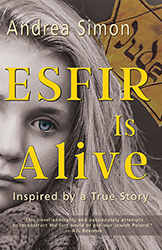Unlike historians, novelist are free to use their imagination in writing about historical events. When it comes to writing fiction about the Holocaust, however, this freedom requires a great deal of sensitivity when recreating the Nazi objective to rid the world of its Jewish population. Martin Amis, the author of numerous novels including Time’s Arrow, a work of fiction whose subject is the Shoah, has managed in his latest work to deliver not only a love story within the confines of Auschwitz, but also a devastating portrait of the Nazi perpetrators. Through Szmul, a Jewish Sonderkommando forced to work in the crematoria, Amis sympathetically describes the hopelessness of the Jews awaiting death in The Zone of Interest — the gas chambers — as well as the violence and cruelty of the Nazi guards.
The novel is told from the perspective of fictional characters such Paul Doll, the Commandant of the Buna-Werks; Golo Thomsen, the nephew of Martin Bormann; and Szmul, the only heroic character in the novel. Amis shows us the virulent anti-Semitism of Bormann and his wife Gerda, the perversions of Ilse Grese, who was hanged by the British after the war, and other Nazi “notables.” He describes the arrogance displayed by the Nazi officials on the eve of their invasion of the Soviet Union and the manner in which they responded to their devastating defeat. Amis’s Nazis are venal and sadistic, not the banal Nazi characterized by Hannah Arendt in Eichmann in Jerusalem.
Lest we think the novel is a total product of Amis’s imagination, the reader will find a comprehensive annotated bibliography of the major scholarly works on the Holocaust which Amis researched for his work of fiction.
Related content:





